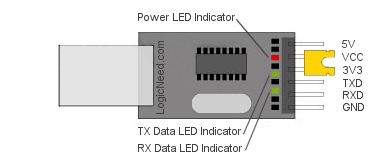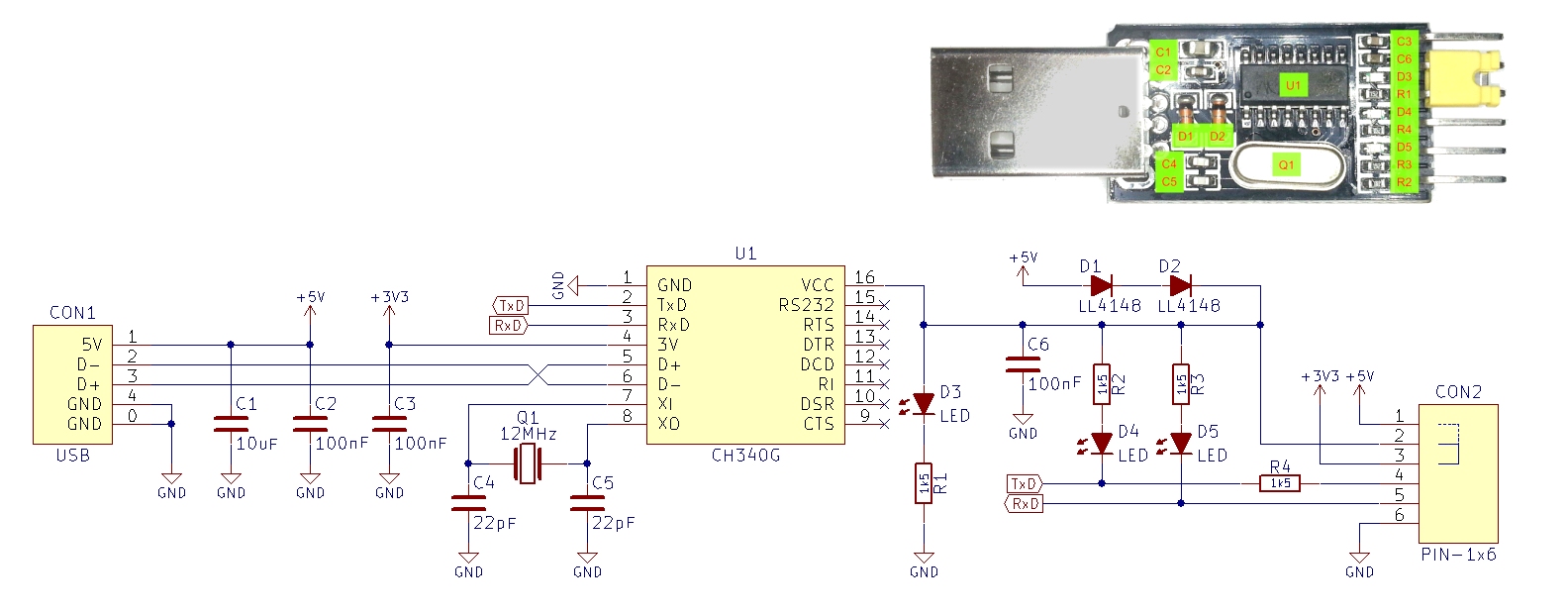The CH340G integrate circuit provides common MODEM signals to allow adding a UART Devices to a computer, or converting existing UART devices to USB interface.
It's a small USB to TTL serial tool, using the CH340G chip. You can use it to connect some serial device to your PC via USB port.
 Features:
Features: ● Provides a virtual serial port over USB 2.0 port
● Full speed 2.0 USB interface
● Based on 340G chip
● Supports operating systems: Windows / Linux / Mac OSX
● Supports baud rates from 50 bps up to 2 Mbps
● Supports CH341 driver
● Dual 3.3V and 5V Power output, work with 3.3v and 5v target device. 3.3V and 5.0V outputs are available to power your project directly from this module.
● Rail voltage:
• 5V mode 4.5 - 5.5V
• 3.3V mode 3.3 - 3.8V
● Operating current typ. 12 mA up to 30mA
● Clock-frequency typ. 12 MHz.
● Power-on reset time typ. 20 ms up to 50 ms
● USB A Connector (male)
● Three indication LEDs (from top to bottom): "Power", "TxD", "RxD".
● Transmitter baud rate error less than 0.3%
● Receiver baud rate tolerance < 2%
Available drivers for systems:
WIN98 / WIN-ME / WIN2000 / WINXP / WIN2003 / VISTA / WIN2008 / WIN7 / WIN8 (32/64) / WIN 10 / MAC OS32 / MAC OS64 / LINUX Module Schematic: 
Important Notes: | ● | There is a jumper on the rear of the board that controls the output voltage on the VCC pin. By default, the board outputs 3.3V and has 3.3V signals. Changing this jumper to 5V will cause the board to output 5V on the VCC pin with 5V signals. |
| ● | CH340G maximum output current is 30 mA, running ESP8266 directly from CH340G is NOT recommended. Because of the typical ESP8266EX current consumption range (w/o SPI Flash) in Modem active mode is: 50 - 170 mA |